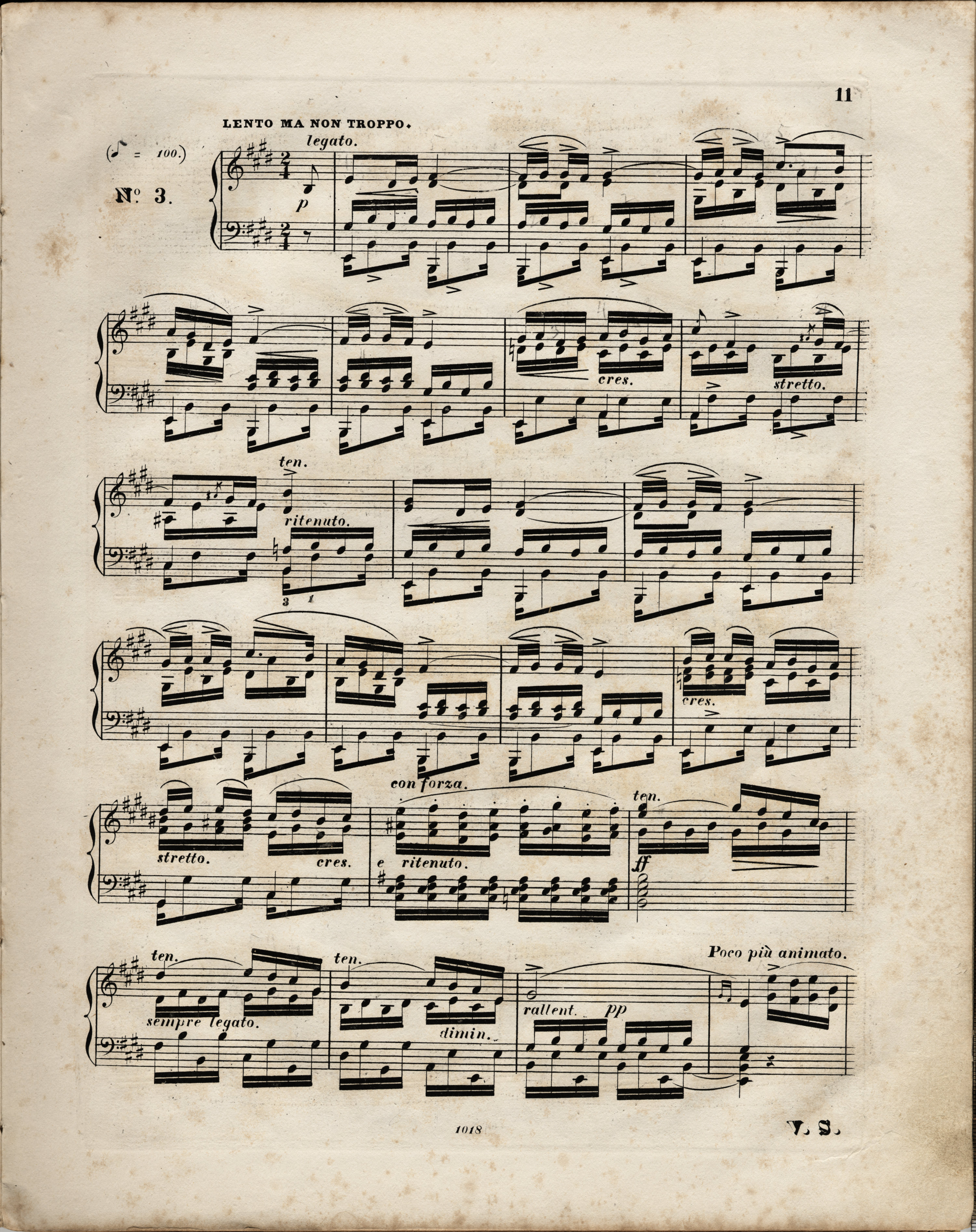



In the sources, the indications concerning the e1 crotchet are unclear. The fact of shifting the accent in A to the right may be considered as an irrelevant inaccuracy of notation or a suggestion of the sign's length. The version of FE seems to be even more puzzling, especially given the fact that it was most probably corrected – over the stave, to the right of the note there are visible possible traces of deletion of the accent. It is also unclear why the staccato dot was not included neither in GE nor in EE.
In the main text we give a short accent over the note, which combines the most definite elements of the notation of the sources. Alternatively, due to the melodic context, we suggest a long accent here.
Compare the passage in the sources »
category imprint: Graphic ambiguousness; Interpretations within context; Differences between sources
issues: Long accents, Errors in EE, GE revisions, Authentic corrections of FE
notation: Articulation, Accents, Hairpins





